Graffiti, an art form that emerged from the shadows of urban landscapes, has proliferated across the globe, adorning city walls, train cars, and public spaces with vibrant colors, intricate designs, and thought-provoking messages.
Its omnipresence prompts us to ponder: Why is graffiti everywhere? This cultural phenomenon transcends mere vandalism, manifesting as a powerful vehicle for self-expression, political commentary, and community identity.
The answers lie in the interplay of socio-economic disparities, youth culture, artistic passion, and the relentless drive to make an indelible mark on the canvas of our cities.
Delving into these factors reveals the complex tapestry that weaves graffiti into the fabric of our urban environments.
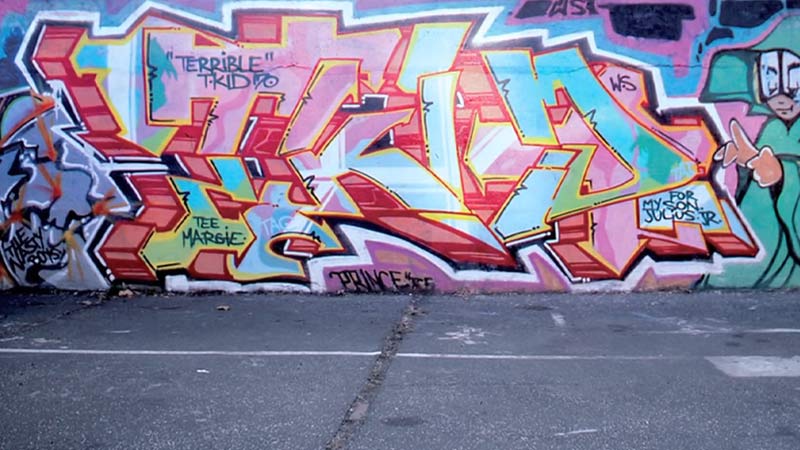
History of Graffiti
The history of graffiti is a captivating journey that spans thousands of years, evolving from primitive cave paintings to a global cultural phenomenon.
Ancient civilizations, including the Egyptians, Greeks, and Romans, used graffiti-like inscriptions on walls to convey messages and commemorate events.
The eruption of Mount Vesuvius in 79 AD preserved Pompeii’s walls, revealing vivid murals and political slogans.
Fast forward to the 20th century, graffiti evolved into its modern form. In the 1960s, it gained prominence in Philadelphia and New York City, where artists like Cornbread and Taki 183 pioneered tagging, marking their names and pseudonyms throughout urban landscapes.
Graffiti soon became intertwined with hip-hop culture, particularly during the 1970s and ’80s, and artists like Keith Haring and Jean-Michel Basquiat took it to the mainstream art world.
Today, graffiti encompasses a wide range of styles and messages, with a rich history that reflects societal changes, artistic innovation, and the enduring desire for self-expression in the public realm.
Why Is Graffiti Everywhere? -The Reasons
Graffiti is everywhere, and its ubiquity can be attributed to a complex interplay of social, cultural, and psychological factors.
While some view graffiti as vandalism and a blight on public spaces, others see it as an art form, a form of self-expression, or even a means of reclaiming urban environments.
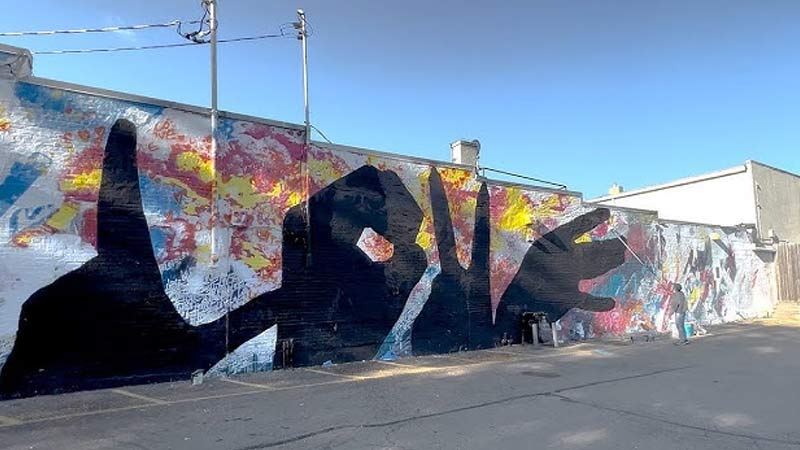
Understanding why graffiti is so prevalent requires delving into these underlying reasons:
Self-Expression
Graffiti offers individuals a powerful platform to express their thoughts, emotions, and artistic inclinations.
For many, it serves as a medium to voice their discontent, share political views, or simply leave their mark on the world.
The act of graffiti can be seen as a form of rebellion against societal norms and a way to assert one’s presence in a world that often marginalizes certain voices.
Youth Culture
Graffiti is often closely associated with youth culture. It’s a means for young people to establish their identities, find their place in society, and connect with their peers.
This subculture often values the thrill of illegal artistic expression and the challenge of creating works in public spaces without permission.
Urban Environment
Cities, with their dense populations and diverse demographics, provide a fertile ground for graffiti to thrive.
Urban landscapes offer countless blank canvases, from walls to trains, bridges, and abandoned buildings. The concrete jungles of cities are prime real estate for graffiti artists seeking visibility.
Social Commentary
Many graffiti artists use their work as a form of social commentary. They might address issues such as inequality, racism, poverty, or environmental concerns.
Graffiti can serve as a visual reminder of these problems, forcing passersby to confront uncomfortable truths.
Artistic Expression
Some graffiti artists view their work as a legitimate form of art. The vibrant colors, intricate designs, and innovative techniques displayed in graffiti murals can rival traditional art forms in terms of creativity and skill.
This perspective has led to a growing acceptance of graffiti as a legitimate art form, leading to more commissioned projects and legal spaces for graffiti.
Anonymous Expression
Graffiti allows individuals to express themselves anonymously, which can be particularly appealing to those who want to share their views or creativity without fear of personal repercussions.
This anonymity can also amplify the message or impact of a piece, as it becomes a voice for the masses rather than an individual.
Counterculture Identity
Graffiti culture has evolved into a distinct counterculture with its own norms, values, and codes of conduct.
This subculture provides a sense of belonging for those who feel alienated or marginalized by mainstream society.
Legacy and Recognition
The graffiti world has its own hierarchy and recognition system. Achieving fame within this subculture can be a strong motivator for graffiti artists, driving them to create work that gets noticed and remembered.
Lack of Enforcement
In some areas, lax enforcement of anti-graffiti laws or limited resources for cleanup can contribute to the proliferation of graffiti. When there are few consequences for illegal graffiti, it can flourish.
Why Is Graffiti Everywhere in THE US?
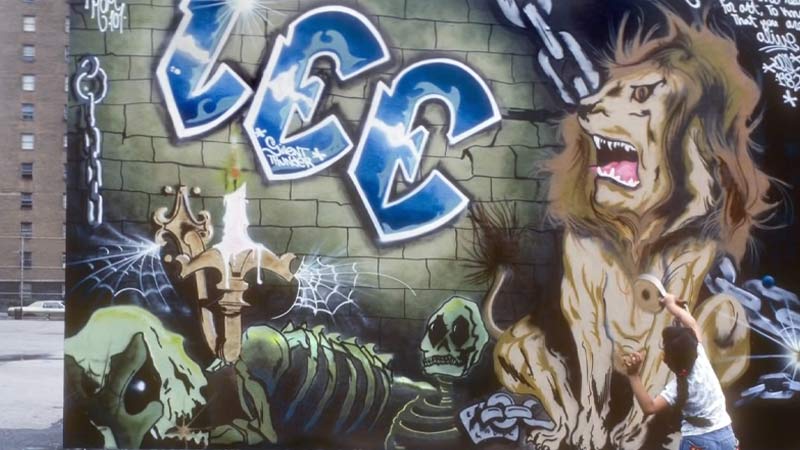
Graffiti is prevalent in the United States for many of the same reasons it is widespread in urban areas around the world.
However, the specific factors contributing to graffiti’s presence in the U.S. can be understood within the context of American society and its unique characteristics.
Here are the reasons why graffiti is everywhere in us:
Urbanization
The United States is highly urbanized, with a majority of its population residing in cities and metropolitan areas.
Urban environments provide numerous surfaces and public spaces for graffiti artists to express themselves. The density of people and structures in cities also increases the visibility and impact of graffiti.
Youth Culture
Graffiti is closely tied to youth culture, and the U.S. has a vibrant and diverse youth population. Young people often turn to graffiti as a form of self-expression, rebellion, or identity-building.
American cities, with their mix of cultures and subcultures, provide a fertile ground for this expression.
Social Issues
The U.S. has its share of social issues, such as inequality, racial tensions, and political polarization.
Graffiti often serves as a means for individuals and communities to voice their concerns, grievances, and hopes for change. It can be a powerful tool for social commentary and activism.
Artistic Expression
American graffiti artists have made significant contributions to the global street art scene. Many U.S.-based artists are internationally recognized for their creativity and innovation in graffiti, contributing to its popularity as an art form. This artistic recognition encourages more individuals to engage in graffiti.
Subcultures and Countercultures
The U.S. has a rich history of subcultures and countercultures, from punk and hip-hop to skateboarding and streetwear.
These subcultures often embrace graffiti as a form of cultural expression, further legitimizing its presence.
Legal Graffiti Walls
Some cities in the U.S. have recognized the artistic value of graffiti and established legal graffiti walls or designated areas where artists can create without fear of legal consequences.
These spaces provide outlets for graffiti artists to express themselves legally, which can help reduce illegal graffiti in other areas while fostering creativity.
Tourism and Cultural Appeal
Graffiti has become a tourist attraction in many American cities, drawing visitors who want to explore the vibrant street art scenes in places like New York City, Los Angeles, and Miami.
The cultural appeal of graffiti has led to its proliferation in areas where tourism is significant.
Public Awareness and Education
Organizations and initiatives in the U.S. have sought to educate the public about the artistic and cultural value of graffiti.
By fostering a better understanding of the art form, these efforts can contribute to its acceptance and growth.
Internet and Social Media
The internet and social media have enabled graffiti artists to share their work with a global audience.
Platforms like Instagram and YouTube have allowed artists to showcase their creations, gain recognition, and inspire others to take up graffiti as a form of expression.
Why Is There So Much Graffiti in Athens?
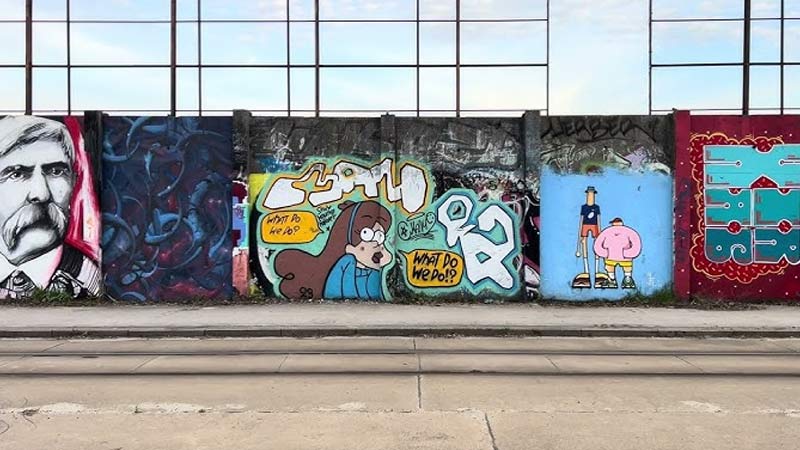
In Athens, the vibrant and ancient capital of Greece, the prevalence of graffiti is a multifaceted phenomenon shaped by a unique blend of historical, cultural, and contemporary factors.
This ancient city, known for its rich history and artistic heritage, finds itself immersed in a tapestry of graffiti that raises questions about its origins and persistence.
To understand why there is so much graffiti in Athens, it’s essential to explore the following factors:
Cultural Heritage
Greece has a rich cultural heritage, including a long history of art and artistic expression. Graffiti, as a form of urban art, is seen by some as a modern extension of this cultural legacy.
The presence of graffiti in Athens can be seen as an attempt by contemporary artists to engage with and contribute to this artistic tradition.
Youth Culture
Graffiti often finds its roots in youth culture, and Athens is no exception. The city has a significant young population, and many young people turn to graffiti as a means of self-expression and rebellion, much like their counterparts in other urban areas.
Athens’ universities and vibrant youth scenes provide fertile ground for graffiti culture.
Political and Social Expression
Greece has experienced significant political and social turmoil in recent years, including economic crises and protests.
Graffiti can serve as a means for individuals and communities to express their frustrations, political views, and social concerns.
Athens, as the capital and the epicenter of many of these events, has seen an increase in politically charged graffiti.
Urban Landscape
Athens, like many modern cities, has a dense urban landscape with numerous public spaces, buildings, and infrastructure.
These spaces often become canvases for graffiti artists seeking visibility and self-expression. Abandoned buildings, construction sites, and underpasses are common targets.
Tourism
Athens is a major tourist destination, attracting visitors from around the world who come to explore its historical sites and vibrant culture.
The street art and graffiti scene, including famous works by local and international artists, have become part of the city’s cultural appeal.
Tourists seeking an authentic urban experience often encounter graffiti as they explore Athens.
Artistic Recognition
Some graffiti artists in Athens have gained recognition both nationally and internationally for their work.
This recognition has contributed to the growth and acceptance of graffiti as an art form in the city. It also encourages emerging artists to continue their creative pursuits.
Street Art Festivals and Initiatives
Athens has hosted street art festivals and initiatives that aim to legitimize and celebrate graffiti and street art.
These events often provide legal spaces for artists to create their work and contribute to the city’s vibrant street art scene.
Social Media and Global Connectivity
The internet and social media have allowed graffiti artists in Athens to share their work with a global audience.
Platforms like Instagram and Facebook have enabled artists to gain recognition and connect with others in the global street art community, leading to the proliferation of graffiti in the city.
Why Is There So Much Graffiti in Rome?
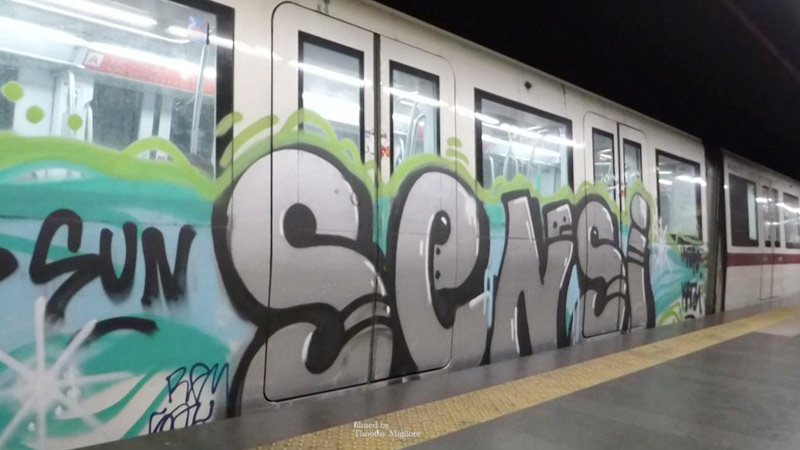
The prevalence of graffiti in Rome, Italy’s ancient capital and one of the world’s most historically and culturally significant cities, can be attributed to a combination of historical, cultural, and contemporary factors.
While Rome is celebrated for its classical art and architecture, it also grapples with a pervasive graffiti problem.
To understand why there is so much graffiti in Rome, it’s important to explore these key factors:
Historical Significance
Rome’s historical significance as the heart of the Roman Empire and the birthplace of Western civilization has fostered a deep connection to artistic expression.
Graffiti, in a sense, is a modern form of self-expression that echoes the city’s rich artistic heritage.
Youthful Population
Rome has a significant young population, including students, artists, and activists. The youth demographic often identifies with the rebellious and creative aspects of graffiti culture, contributing to its persistence.
Political Expression
Italy, including Rome, has a history of political activism and social movements. Graffiti serves as a means for citizens to express their political views and dissent on various issues, such as government policies, economic inequality, and immigration.
Tourism
Rome is one of the world’s most visited cities, attracting millions of tourists annually. The high number of tourists inadvertently contributes to graffiti’s visibility as visitors often photograph and share these artistic expressions.
Urban Decay and Neglect
Like many other major cities, Rome has areas suffering from urban decay, abandoned buildings, and neglected public spaces. These areas become prime canvases for graffiti artists seeking visibility.
Community Identity
Some neighborhoods in Rome have developed a strong sense of community identity through graffiti. Residents may commission local artists to create murals that reflect their shared values and cultural heritage, fostering a sense of belonging and pride.
Street Art Culture
Rome, like other global cities, has seen the rise of street art culture. Some local authorities have embraced street art as a legitimate form of urban expression, leading to the creation of legal street art spaces that encourage artists to showcase their work.
Lack of Enforcement
In certain areas, lax enforcement of anti-graffiti laws or limited resources for cleanup can contribute to the proliferation of graffiti. When there are few consequences for illegal graffiti, it can flourish.
Historical Ties to Graffiti
Rome has historical ties to graffiti that predate the modern era. Ancient inscriptions and drawings found on walls and buildings are considered precursors to contemporary graffiti. This connection to a centuries-old tradition may influence modern graffiti artists.
Is Graffiti Illegal Everywhere?
Graffiti is not universally illegal everywhere, as its legality depends on local, regional, and national laws and regulations. The legality of graffiti can vary significantly from one place to another.
Here’s a general overview:
Laws Vary by Location
Graffiti laws and regulations are typically determined by local and municipal governments. Therefore, what is legal in one city or jurisdiction may be illegal in another.
Some cities have more permissive attitudes toward graffiti and may designate specific areas or walls where graffiti is allowed or even encourage street art as a form of public expression.
Private Property vs. Public Property
Whether graffiti is considered legal or illegal can also depend on whether it is on private or public property.
In many places, graffiti on private property without the owner’s consent is typically considered illegal, and offenders can be subject to criminal charges or fines.
Graffiti on public property, such as government buildings or infrastructure, is often more likely to be subject to legal penalties.
Artistic and Permitted Graffiti
Some cities have programs that allow for commissioned or permitted graffiti and street art. Artists may obtain permission to create murals or public art installations in designated areas.
These projects are often celebrated as legitimate forms of artistic expression and are not subject to legal consequences.
Anti-Graffiti Laws
Many places have specific anti-graffiti laws that make unauthorized graffiti illegal, with penalties that can include fines, community service, or even imprisonment, depending on the severity of the offense.
Clean-up and Removal
Local authorities in many places are responsible for graffiti removal on public property. These authorities may invest resources in graffiti eradication programs to maintain the appearance of public spaces.
Community Attitudes
Graffiti’s legality can also be influenced by community attitudes. In some neighborhoods or communities, residents may tolerate or even embrace graffiti as a form of art or expression, leading to more lenient enforcement.
Graffiti as Art
There is an ongoing debate about whether graffiti should be considered vandalism or art. Some artists have gained recognition and even international acclaim for their graffiti work, leading to a shift in public perception and legal approaches in certain areas.
Difference Between Graffiti and Street Art
Graffiti and street art, though often used interchangeably, represent distinct forms of urban expression. While both utilize public spaces as their canvas, they differ significantly in terms of intent, style, legality, and cultural context.
Understanding the differences between graffiti and street art is essential to appreciate the diverse and dynamic world of urban artistry.
Here are the differences between graffiti and street art:
Intent and Style
- Graffiti: Begin by examining the artwork’s intent and style. Graffiti typically revolves around tagging, where artists sign their pseudonyms or “tags” in unique and stylized lettering. It often emphasizes individual expression and identity.
- Street Art: In contrast, street art encompasses a wider range of artistic styles. It includes murals, stencils, wheatpaste posters, and installations, which may focus on aesthetics, storytelling, or social commentary rather than personal identity.
Legality
- Graffiti: Consider the legality of the artwork. Graffiti is often associated with illegal or unauthorized markings on public or private property. It is frequently seen as vandalism by authorities, and graffiti artists often operate covertly.
- Street Art: Street art can be created both legally and illegally, depending on the context and permission of the property owner. Some cities have embraced street art as a legitimate form of public art and have designated areas for artists to create legally.
Cultural Context
- Graffiti: Take into account the cultural context of the artwork. Graffiti is closely tied to subcultures like hip-hop, with a focus on the underground, countercultural aspects. It often thrives on an ethos of rebellion, anonymity, and risk-taking.
- Street Art: Street art has gained greater acceptance within the mainstream art world. Many street artists have transitioned from the streets to galleries and museums, contributing to a blurring of lines between street art and traditional art forms.
Content and Message
- Graffiti: Scrutinize the content and message of the artwork. Graffiti often focuses on the artist’s name or pseudonym (tag) and may not convey a specific narrative or message. It’s primarily about self-expression or marking territory.
- Street Art: Street art frequently incorporates storytelling, social commentary, or thematic elements into the artwork. Look for symbols, themes, or messages that go beyond personal identity.
Level of Detail and Complexity
- Graffiti: Assess the level of detail and complexity in the artwork. Graffiti can range from simple, single-color tags to more elaborate and intricate pieces, but it often emphasizes stylized lettering.
- Street Art: Street art tends to feature greater complexity and visual engagement. Look for intricate designs, color variations, and the use of multiple techniques like stencils, paste-ups, and mixed media.
Impact on the Environment
- Graffiti: Consider how the artwork affects the environment. Graffiti, especially when unauthorized, can sometimes contribute to urban blight or negatively impact property values.
- Street Art: Street art, when created with care and artistic intent, can enhance the visual appeal of public spaces, contributing positively to the environment.
FAQS
Is graffiti considered a legitimate art form by art institutions?
Yes, over the years, many art institutions and museums have recognized graffiti as a legitimate and influential form of contemporary art.
What role does social media play in the proliferation of graffiti?
Social media platforms have played a significant role in the spread of graffiti. Artists can now share their work with a global audience, gaining recognition and inspiring others, leading to the rapid dissemination of graffiti culture.
Are there any positive effects of graffiti on communities?
Yes, in some cases, graffiti can have positive effects on communities. It can deter other forms of vandalism, make neighborhoods more visually appealing, and foster a sense of local pride when used for community projects.
Do different cultures have unique graffiti styles and themes?
Yes, graffiti often reflects the cultural, political, and social context of the region where it is created.
To Recap
The omnipresence of graffiti transcends mere acts of vandalism, reflecting a complex tapestry of human expression, social dynamics, and cultural evolution.
Graffiti’s ubiquity, from bustling metropolises to quiet neighborhoods, is a testament to its enduring relevance.
It thrives as a platform for self-expression, rebellion, and artistry, encapsulating the voices of marginalized communities, the aspirations of the youth, and the pulse of contemporary society.
While graffiti’s legality varies widely, it remains a vibrant medium that challenges conventions, fosters dialogue, and leaves an indelible mark on the urban landscape.
Its persistence beckons us to appreciate its multifaceted role in shaping the modern narrative of our cities and streets.
Leave a Reply